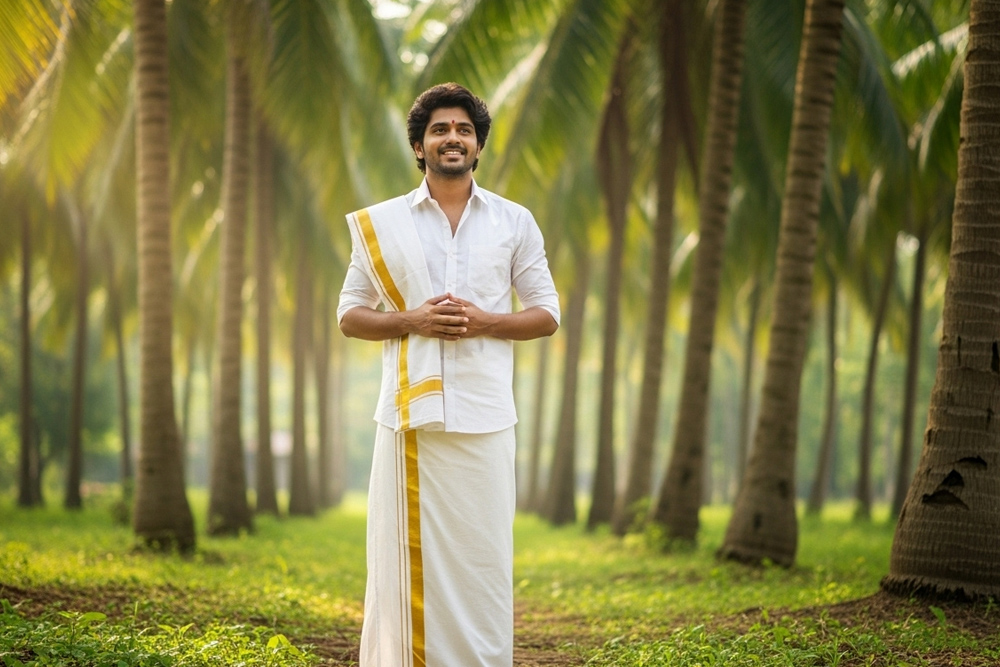Modern wardrobes are filled with jeans and global fashion trends, but the dhoti continues to represent quiet elegance, standing strong as a symbol of culture, tradition, and pride. Once considered everyday wear in India and parts of South Asia, the dhoti may now seem reserved for rituals, weddings, or special occasions. Inside its simple folds is a lasting beauty and purpose that still matters today.
A Glimpse Into History
The dhoti isn’t just a piece of clothing; it’s history woven in cotton. Worn for centuries by scholars, saints, farmers, and freedom fighters, the dhoti is believed to be one of the oldest garments still in use. Its simplicity, breathability, and versatility made it the ideal wear for India’s diverse climate and lifestyle.
Mahatma Gandhi, a strong advocate of khadi and self-reliance, wore a dhoti as a political statement. For him and many others, it became a symbol of dignity, nationalism, and non-violence. Even today, this historical association gives the dhoti a mood of quiet strength and purpose.
Comfort That Speaks for Itself
One of the main reasons the dhoti has stood the test of time is its comfort. Made primarily from cotton, it is ideal for hot and humid climates. Its nature allows for free movement, making it both functional and breathable, perfect for everything from farming to formal ceremonies.
In older times, when synthetic fabrics and tight clothing could feel restrictive, the loose drape of a dhoti felt like a return to comfort and ease. It’s not just traditional; it’s practical.
Cultural Identity and Pride
In many parts of India, wearing a dhoti is not just about fashion; it’s a mark of respect, tradition, and cultural pride. In Tamil Nadu, Kerala, West Bengal, and other regions, the dhoti (or its regional variations like veshti, mundu, and panche) continues to be worn during weddings, religious ceremonies, and festivals.
Wearing a dhoti connects people to their roots. It’s a way of honouring one’s ancestors, customs, and language, a visual reminder that culture still lives on, not just in stories, but in our very clothing.
Modern Takes on a Classic Garment
Today’s fashion designers and stylists are reimagining the dhoti for the modern wardrobe. Dhoti pants, dhoti-style sarees, and fusion dhoti suits have made their way into high-end fashion and streetwear alike. Celebrities, influencers, and grooms are proudly wearing dhotis in weddings and public appearances, helping blend tradition with modern flair.
This blend of old and new establishes that the dhoti is not stuck in the past; it is evolving with the times. It’s becoming a fashion statement that says, “I respect where I come from, and I know where I’m going.”
Sustainability and Slow Fashion
In a time when the fashion industry is criticised for waste and overproduction, the dhoti offers a refreshing alternative. It often uses natural fibres like cotton or khadi, requires minimal stitching, and is long-lasting. Some are even handwoven by crafters, supporting rustic livelihoods and keeping traditional skills alive.
Choosing to wear a dhoti is also an eco-conscious decision. It reflects a change toward sustainable, mindful fashion, one that values quality, heritage, and purpose over mass-produced trends.
The dhoti is more than a garment; it’s a story of heritage, identity, and style. Today, it reminds us to slow down, stay grounded, and wear our roots with pride.
Now, global fashion turns its eye toward sustainability, authenticity, and cultural storytelling, the dhoti deserves to be more than just a special-occasion outfit. It deserves a place in the modern wardrobe, not just for its elegance, but for everything it represents. So, the next time you tie a dhoti, know this: you’re not just wearing tradition. You’re carrying forward a legacy, one fold at a time.

